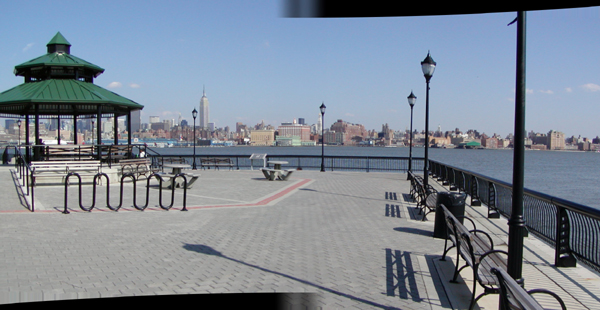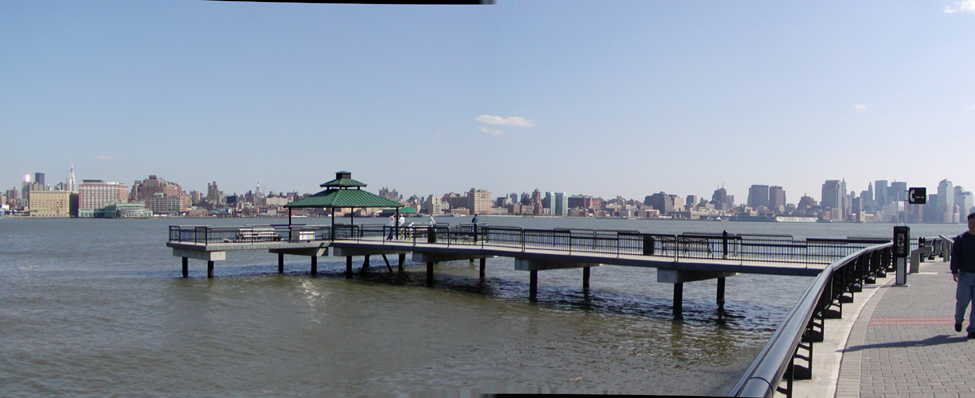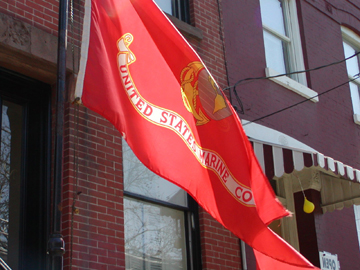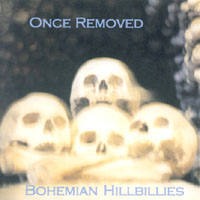Monkeys, birds, flying pigs and coffee pots
Online monkeys, birds, flying pigs, and coffee pots, that is.
Why would you want to connect any of those things to the Internet anyway? You might want to hook up the coffee pot for the same reason other cyber pioneers have connected toasters, refrigerators and air conditioning: to control it remotely. You might want to connect the monkeys to see how long it took them to write as well as Shakespeare or the average sitcom scriptwriter. You might try using the birds to facilitate telephone conversations. And the pigs? According to "The 12 Networking Truths," (#3):
<< With sufficient thrust, pigs fly just fine. However, this is not necessarily a good idea. It is hard to be sure where they are going to land, and it could be dangerous sitting under them as they fly overhead.>>
Those are just some of the ponderous, obtuse, and amusing things I'm learning in cyberschool this year, thanks to the Berkman Center for Internet & Society at Harvard Law School, where this year's online class is "Development and the Internet: The Digital Divide." The classes are free, open to all, and noncredit.
So far we've learned the standard protocol for using birds as Internet service providers, control coffee pots remotely, how the writing monkeys might work, and the 12 Networking Truths, many of which are probably familiar, such as #7 (It is always something) or #10 (One size never fits all). The bird thing started out as a joke, but 11 years after the protocol was written, a carrier pigeon club in Bergen, Norway, successfully used birds with packets of computer data printed onto paper attached to their legs, and transmitted a 64 byte "ping" in only 1 hour and 42 minutes.
posted by Janet Dagley Dagley @2:48 PM
|
5.4.03  |
In Stitches
The DDD has been nothing but text for the past few days, so it's time to throw some more photos into the mix. Today, a collection of "stitches" — two or more separate photos stitched together by computer to create a more panoramic view.

Objects in stitches are closer than they appear.

Our neighborhood.

This fishing pier is part of the new waterfront park.

Michael took, and stitched, these photos. I left the edges so you could see how they fit together. Stitched photos are quite different from altered photos, especially the one that just got a Los Angeles Times photographer fired.
posted by Janet Dagley Dagley @2:44 PM
|
4.4.03  |
29 years ago today...
It was hot and muggy over much of North America the morning of April 3, 1974, with thunderstorms predicted for the afternoon across the middle of the continent as a cold front moved through. A typical spring day? Anything but.
Weather history was made that day: six F-5 (the most powerful on the Fujita scale) tornadoes, 23 F-4 tornadoes, 35 F-3 tornadoes, 30 F-2 tornadoes, 31 F-1 tornadoes, and 23 F-0 tornadoes — that's 148 in a 24-hour period, along with hundreds of thunderstorms, lightning strikes and the most powerful winds on record: 318 miles per hour. The storms killed 315 people, injured more than 5,000, from Mississippi to Ontario, Canada, snatched infants from their mothers' arms, ripped away not only whole houses but whole neighborhoods, and is best known either as "the Super Tornado Outbreak" or by the name of the city that was hit the hardest: Xenia, Ohio, where 33 people died.
I figured there just HAD to be something about it in today's Dayton Daily News, but apparently not. There aren't many people working there now who were there that day, and besides it's usually the even-numbered anniversaries that get the attention. Next year they'll probably print a special section. I didn't remember it myself until this afternoon when I was on the ferry coming home from Manhattan, or I would have written this as a commentary for WYSO instead of just another blog entry. (Note to self: recycle this for WYSO next year, and pay attention next time!)
Weather historians have another name for that day: the worst weather day ever.
I was a veteran cub reporter for the Dayton Daily News at the time, still the youngest person on the staff at 21 even though I'd worked there three years, part time at first covering local government meetings at night, by then a full fledged staff writer with, as then-editor Jim Fain would have put it, "all the rights and perquisites appertaining thereto." I was making $174 a week, paying $80 a month rent, driving a brand-new silver-blue Volkswagen with an even newer 8-track-tape stereo. I was working 7 a.m. to 4 p.m. then, and I'd just gotten home from work when the phone rang. It was my boss, Randy Preddy, telling me Xenia had just been hit by a tornado. "Try to get there if you can, any way you can — but be careful: there may be trees or power lines down in the roadway, or bridges out. Don't take any chances. We're trying to get as many people as we can out there, so if you can't make it, just come back to the office. We'll be here."
I drove straight east on U.S. 35 until I saw a roadblock ahead. I took a left just before it and headed north on a dark two-lane road, over a railroad crossing, toward Yellow Springs. Eventually I found U.S. 68 and turned south again toward Xenia, but I ran into another road block. I pulled out my press pass to show the authorities. "I don't care who you are, ma'am, you can't go any farther here," a sheriff's deputy said. "Nobody can." He pointed his flashlight toward the huge tree across the road in front of us, and beyond that, a live, sparking power line. So I took another detour, and eventually made it into Xenia from the north. The tornado had destroyed the western half of the town, in some places scrubbing a whole subdivision down to bare earth and concrete slabs. But the hospital was a few blocks north and east of downtown, and it was still there. So were as many injured people as could get there, hundreds of them. I talked to as many as I could, collecting names to run in the next day's paper, listening to one eyewitness account after another. People were crying, shaking, bloody — many had been hit by broken glass, and you could see little pieces of it stuck on their faces and hair. Many weren't injured, just looking for someone missing. There were lists of names, handwritten on yellow legal paper, posted on a bulletin board in the emergency room. I copied them all into my notebook; that took awhile. I got statements from the hospital staff, who were impeccably professional even though they'd been through much the same traumatic experience as their patients. I didn't even realize I was tired or hungry until a grandmotherly Red Cross volunteer, in a crisp Red Cross uniform, handed me a sandwich. I tried to decline; after all, reporters aren't supposed to accept gifts of any kind. "I don't think I should have one," I told her, "I'm the press, not one of the victims."
"That doesn't matter," she said, "Everybody gets one." I devoured it on the spot.
After I'd interviewed everybody who'd talk to me, I got back in the VW and headed back to Dayton the way I'd come, detours and all, since it seemed unlikely that the roads had been cleared. My article about that night in the hospital was in the next day's paper, and in subsequent days, more articles by most everybody on the staff who could read and write. A week after it happened, I decided to go back to Xenia on my own time and take a closer, not-on-deadline look. A friend and co-worker of mine (at the time), Tom Lynch, went along with me that day. I took notes; he drew in his sketchpad. People were already trying to rebuild; the Mennonites had arrived on the scene and the sound of hammering was everywhere. Some families has spray-painted messages on what was left of their homes, which for block upon block was little more than a piece of foundation and some plumbing, with upstairs toilets still in place even after the stairs and walls and floor were gone. The paper printed that, too, but warned us not to do any further tornado pieces without an editor's approval. You can find all that in the microfilm archives at the Dayton Public Library.
There are lots of people who remember the Xenia tornado better than I do, because they lived through it. There are lots of people who know more about what happened that day, scientifically speaking, than I do, because they are meteorologists and every meteorologist learns about that day in order to become a meteorologist.
A man now known only as "Mr. Brokeshoulder," a Native American resident of Xenia, happened to have a live microphone and a reel-to-reel tape recorder going when the tornado ripped through; you can hear that recording in mp3 form here. There's also a link to a video clip from the History Channel. Survivor Kitty Merchant has lots of photos on her site. And the National Oceanic and Atmospheric Administration did a nice writeup for the 25th anniversary. And Dr. Fujita, inventor of the Fujita scale, put together this map of the outbreak as part of his extensive study of the outbreak.
But wait: there's more. On September 20, 2000, another tornado, following the same path as the 1974 twister, touched down in Xenia again, killing one, injuring 80, and destroying 48 homes, some of them rebuilt after 1974.
So wherever you are right now, whether the sun is out or cats and dogs are coming down in buckets, no matter how bad the weather, take a moment to remind yourself that it could be worse.
posted by Janet Dagley Dagley @3:46 PM
|
3.4.03  |
Out of Iraq
Some good news for a change, and not an April Fool's joke, either. Congratulations to the U.S. military and the Iraqi civilians who assisted them in rescuing POW Pfc. Jessica Lynch overnight, and to all the civilians who worked so hard to get journalists Molly Bingham (freelance photographer for Newsweek), Matt McAllester and Moises Saman, both with Newsday, and Danish freelance photographer Johan Rydeng Spanner out of the Iraqi prison where they were being detained. Good luck to the Rev. Jesse Jackson in his efforts to get the other prisoners released. Did you know that POW Spc. Shoshanna Johnson is the single parent of a two-year-old girl?
We aren't hearing much about it here in the U.S., but British troops, specifically the Black Watch, also pulled off a dramatic rescue. And four other journalists were released and expelled from Iraq after being detained not by the Iraqis but by the U.S. military. Boaz Bismuth of the Israeli daily newspaper Yediot Ahronot, Dan Scemama of Israel's Channel One television, and Luis Castro and Victor Silva of Radio Televisao Portuguesa were covering the war independently. So was Geraldo Rivera, even though he claimed to be "embedded" with the 101st Airborne. He also was expelled from Iraq by the U.S. military, for drawing a map on live television showing where various U.S. forces were and where they were planning to go. Meanwhile, there are reports that the Iraqi government has just kicked out Al Jazeera's reporter in Baghdad. Peter Arnett is still there, though, working now for British tabloid the Daily Mirror.
Iraq fact of the day: Half of the 5.5 million people in Baghdad (excluding U.S. and British troops) are younger than 15. Only 20 percent -- one in five -- of U.S. residents are under age 15.)
posted by Janet Dagley Dagley @5:53 PM
|
2.4.03  |
Peace Breaks Out
Weapons eliminated, citizens of all nations getting along fine
Next: Wiping out disease, restoring planet's ecological balance
Fantasyland, April 1 -- We interrupt our coverage of war and other bad news with this special bulletin: peace has broken out worldwide, surprising strategists, soldiers, journalists and arms dealers alike as the world inexplicably decided to answer Rodney King's famous question, "Can't we all just get along?" with a resounding, "Yes!" Once they stopped fighting, the people of earth decided to work on eliminating disease as the next long-term goal, although in the short term they pledged to find some sort of workable health insurance for all.
And that's our April Fool Day's report. These stories, however, are real:
A man charged by the Securities and Exchange Commission with insider trading says he is a time traveler from the future, and that's how he was able to turn an $800 investment into $350 million in two weeks.
The Washington Post has broken from the journalistic pack and is reporting a very different version of the shooting of 7 women and children at a U.S. Army checkpoint in Iraq yesterday: this one is an eyewitness account from the Post's reporter on the scene.
Takoma, one of the U.S. Marines mine-detecting dolphins working in Iraq, has returned to work after 48 hours of unscheduled leave.
Legislators in the states of Texas, South Carolina, Florida, Georgia, Alaska, Tennessee, and Colorado have introduced bills that would outlaw not only the use of any computer security firewall, but all Windows operating systems introduced since 1998. If those compu-ignorant lawmakers have their way, the only way to legally connect a computer to the Internet would be to leave it completely open to any and all viruses or hackers.
The Fourth District Court of Appeals in Ohio has ruled that the right to free speech includes the right to bark like a dog.
posted by Janet Dagley Dagley @3:50 PM
|
1.4.03  |
We have a winner!
Congratulations to Tony Soll, originally of London, England, more recently of Brooklyn, New York, who, with the help of Google, came up with the correct answer for our mystery quote. It was Mark Twain who wrote:
<<For in a republic, who is "the Country"? Is it the Government which is for the moment in the saddle? Why, the Government is merely a servant- merely a temporary servant; it cannot be its prerogative to determine what is right and what is wrong, and decide who is a patriot and who isn't. Its function is to obey orders, not originate them. Who, then, is "the Country"? Is it the newspaper? is it the pulpit? Is it the school superintendent? Why, these are mere parts of the country, not the whole of it; they have not command, they have only their little share in the command. They are but one in a thousand; it is in the thousand that command is lodged; they must determine what is right and what is wrong; they must decide who is a patriot and who isn't.>>
In addition to his talent for Internet research, Tony is a teacher and musician. You can listen to some of his music on his web site or on The Stream at BigListen.com.
Meanwhile, it's been a week now since we heard from blogger Salam Pax in Baghdad; we hope he and his family are safe. The fictitious Saddam Hussein, however, is still posting, as are the spoof versions of Kim Jong-Il and Osama bin Laden. Here's one of the fake Osama's recent posts:
<<There are things in this world that even Allah would be hardpressed to explain....
For example, we have been constantly on the run for months now. Every day we move to a new cave, or a new campsite, or a new mountain pass.
The world's top law enforcement agencies have been searching for us since the fall of 2001, but to no avail.
Even the world's most powerful and technologically advanced military force has been engaged in a massive, unrelenting hunt for our hideouts. Yet they, too, have repeatedly failed to track us down.
Quite frankly, there are times even WE don't know where in the name of Mecca we are.
In light of all this, how is it that those cursed free AOL Version 8 disks continue to find us?>>
In other bin Laden news, while her uncle hides, Osama's niece is seeking the spotlight.
On porpoise? At least one of the dolphins (officially known as "marine mammal systems") working with U.S Marines to sniff out mines at the Iraqi port of Umm Qasr has gone AWOL.
Though the generals at the daily Centcom briefings in Doha, Qatar, never exactly confirmed reports from embedded reporters that some U.S. Marine units in Iraq were down to one meal a day due to disrupted supply lines, a group of Iraqis fleeing the fighting didn't wait for official word. They stopped their bus on the way to safety to share their own rations with a group of hungry Marines. "Man I never thought a boiled egg could taste so damn good," one grateful Marine reportedly said. Another said the displaced Iraqis (within a country they're "displaced," outside it they're "refugees") told him, "We like Americans," and some said they planned to go to the U.S. after the war:
<<"They told me they wanted to go to America after the war. I said where. They said California. I said why? They said the song Hotel California and they left singing Hotel California." >>
Was it just wistful California dreaming, or were the displaced Iraqis offering a warning when they sang, "You can check out anytime you want, but you can never leave"?
posted by Janet Dagley Dagley @1:24 PM
|
31.3.03  |
Wild Art Week
To put a spectacular photo finish on our first ever Wild Art Week celebration, a trio of double takes.

Click here to take another look.

Click here to take another look.

Click here to take another look.
posted by Janet Dagley Dagley @9:34 AM
|
30.3.03  |
|




